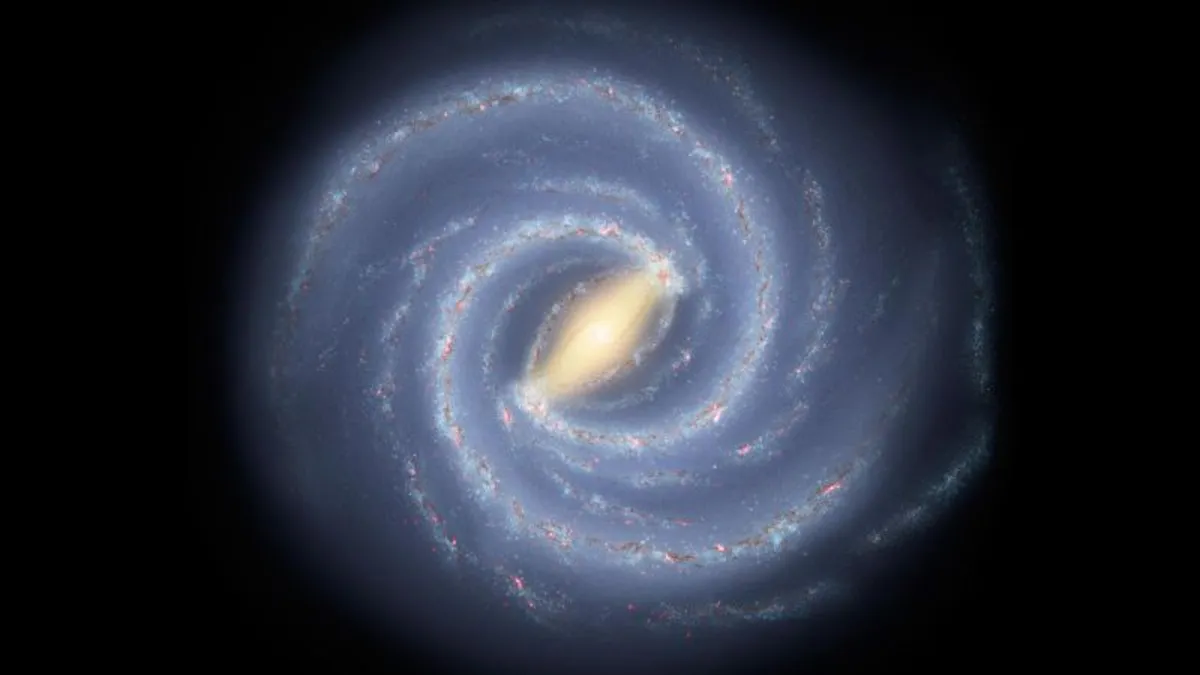
Sign up for CNN’s Wonder Theory science newsletter and explore the universe with updates on fascinating discoveries and scientific advancements. One of the most intriguing topics in astronomy is the predicted collision between our Milky Way galaxy and its largest neighbor, the Andromeda galaxy, anticipated to occur in approximately 4.5 billion years. This galactic event, often referred to as “Milkomeda,” has been a subject of speculation among astronomers since 1912. Recent research, however, suggests that the likelihood of this monumental clash may be less than previously assumed.
At first glance, it might seem that the Milky Way and Andromeda, which are currently separated by around 2.5 million light-years, are on an inevitable collision course. They are traveling towards each other at a staggering speed of approximately 223,694 miles per hour (100 kilometers per second). However, a new study conducted by astronomers has introduced a more nuanced understanding of this potential galactic encounter.
The study took into account the gravitational influences of other galaxies within our Local Group, which consists of about 100 known smaller galaxies. Among these are significant players like the Large Magellanic Cloud (LMC) and the Triangulum galaxy (M33). A comprehensive analysis involving 100,000 simulations, powered by data from the Hubble and Gaia space telescopes, revealed that there is only a 50% chance of a collision between the Milky Way and Andromeda within the next 10 billion years. Notably, the probability of a collision occurring in the next 4 to 5 billion years is just 2%, a significant reduction from previous estimates.
Should the Milky Way and Andromeda merge, the resulting collision would obliterate both galaxies, ultimately transforming their spiral structures into one elongated galaxy. “Collisions between galaxies often lead to spectacular cosmic events,” explained study co-author Carlos Frenk, a professor at Durham University in England. “We once believed this was the fate of our Milky Way, but now we know there’s a substantial chance we may be able to avoid that grim future.”
Despite the promising odds against a Milky Way-Andromeda collision, the study does highlight other risks. Frenk cautions that the Milky Way has a higher likelihood of colliding with the LMC within the next 2 billion years, which could lead to significant changes in our galaxy’s structure.
The LMC orbits the Milky Way, while M33 is a satellite of Andromeda. Although the LMC’s mass is approximately 15% that of the Milky Way, its gravitational influence can significantly alter the Milky Way’s trajectory. “The gravitational pull from the LMC and M33 creates enough of a shift in the Milky Way's motion to lower the chances of a direct collision with Andromeda,” noted lead study author Dr. Till Sawala, an astronomer at the University of Helsinki.
Previous studies often relied on assumed values for various unknown factors, such as the positions, motions, and masses of the Local Group galaxies. The current research accounted for 22 different variables, leading to a more accurate prediction of the potential outcomes. “By conducting thousands of simulations, we could effectively consider all observational uncertainties,” Sawala added. The study concluded that there is a 50% chance of a collision occurring within the next 10 billion years.
In many of the simulations, the Milky Way and Andromeda galaxies initially passed closely by each other before eventually losing enough orbital energy to merge. Such a merger could trigger a massive starburst, resulting in the formation of numerous new stars. However, this would be followed by intense radiation from exploding young stars and an active supermassive black hole, eventually halting star formation altogether. Over time, the remnants of both galaxies would evolve into a largely featureless elliptical galaxy.
Geraint Lewis, a professor of astrophysics at the University of Sydney, highlighted the significance of the gravitational interactions of M33 and the LMC. “While we can't definitively rule out a future collision, this research indicates that the narrative of a catastrophic collision destroying both galaxies is not as straightforward as previously thought. Even close encounters could significantly affect both galaxies,” he stated.
While accounting for the LMC's gravitational effects is crucial, addressing uncertainties remains the most significant aspect of this new study. Scott Lucchini, a postdoctoral fellow at Harvard & Smithsonian, emphasized the importance of sampling uncertainties in positions, velocities, and masses to obtain a comprehensive view of potential outcomes. “The intricacies of galaxies make predictions complex, leaving the fate of the Milky Way open to possibility,” he noted.
Interestingly, the fate of our sun may have a more direct impact on Earth’s future than the cosmic dance of galaxies. With our sun currently at 4.5 billion years old, it is expected to evolve into a red giant in about 5 billion years, potentially engulfing Mercury, Venus, and possibly Earth itself. “The demise of the sun poses a greater threat to our planet than the anticipated collision with Andromeda,” Sawala concluded. “While the merger would mark the end of our galaxy, it doesn't necessarily spell doom for the sun or Earth.”
In summary, the probability of a catastrophic collision between the Milky Way and Andromeda galaxies is lower than previously thought, with significant implications for our understanding of cosmic evolution. As further data from the Gaia space telescope becomes available, our understanding of these celestial dynamics will continue to evolve.